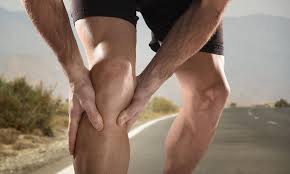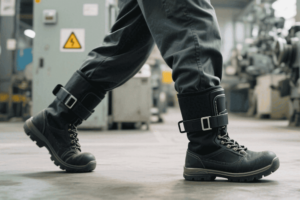Taking care of your joints is important for staying mobile and preventing injury, especially when engaging in regular exercise. The joints are the connectors between bones, allowing for the smooth movement necessary for physical activities. Keep reading to learn how to protect them.
Warm-Up and Cool Down
Before diving into any exercise routine, it is vital to prepare your joints and muscles with a proper warm-up. A good warm-up increases blood flow, enhances muscle elasticity, and improves the range of motion in your joints. This can include light cardio, such as brisk walking or jogging, combined with dynamic stretches targeting the joints you’ll be using during your workout. Cooling down after exercise is equally important. Stretching post-exercise helps reduce muscle stiffness and maintains joint flexibility.
Choose Joint-Friendly Exercises
Not all exercises are the same when it comes to joint health. Low-impact activities like swimming, cycling, and using an elliptical machine, are gentler on the joints compared to high-impact exercises like running or plyometrics. These low-impact exercises provide cardiovascular benefits and muscle strengthening without placing excessive strain on the joints. Strength training is also important because it helps build muscles that support and protect your joints. However, it is crucial to use the correct form and not lift weights that are too heavy, which can lead to joint injuries.
Stay a Healthy Weight
Carrying excess weight on your body puts extra stress on your joints, particularly the weight-bearing ones like the knees, hips, and lower back. Staying at a healthy weight through a balanced diet and regular exercise can massively reduce the risk of joint pain and degeneration. Even a small reduction in weight can make a significant difference in joint pressure, alleviating discomfort and improving mobility.
Wear Proper Footwear
Investing in good quality, supportive footwear can make a huge difference in joint health, especially for those who engage in running or walking. Proper shoes give the necessary support and cushioning to absorb shock, lessening the impact on your joints. Make sure your shoes fit well and are appropriate for the specific activity you are doing. Replace your shoes regularly to make sure they continue to provide adequate support.
Use Compression Sleeves
Exercise support sleeves from Bearhug can be a valuable addition to your exercise gear. These sleeves provide support and increase blood circulation to the joints, which can reduce swelling and discomfort during and after workouts. They are particularly beneficial for those with joint issues or those recovering from an injury. Compression sleeves can help prevent further strain and enhance overall joint function by stabilizing the joint and maintaining warmth.
Listen to Your Body
Paying attention to your body’s signals is crucial in preventing joint injuries. If you experience joint pain during or after exercise, it is essential to rest and allow time for recovery. Pushing through pain can lead to more serious injuries and long-term joint problems. If the pain persists, it is advisable to speak to a healthcare professional for a proper diagnosis and plan for treatment.
Stay Hydrated
Staying hydrated is not just good for overall health but also vital for joint health. Hydration helps maintain the lubrication in your joints, reducing friction and wear during movement. Make sure to drink plenty of water before, during, and after your workouts to keep your joints well-lubricated.
Incorporate Flexibility and Balance Training
Incorporating exercises that enhance flexibility and balance into your routine can also protect your joints. Activities like yoga and Pilates improve joint flexibility, muscle strength, and balance, which helps prevent falls and joint injuries. These exercises also promote body awareness, teaching you how to move correctly and efficiently.





Be First to Comment